Overview of Google Maps and Alternatives
Google Maps API is a free web mapping service (available on desktops, mobiles, and tablets) developed by Google. It offers street maps, real-time traffic conditions, and route planning for travelers by car, bicycle, foot, or public transport.
Some of the best alternatives to Google Maps API offer a free or low-cost map service with some of the same features as Google Maps, including satellite imagery and street maps.
But first: If you’re new to the world of API, check out this free resource to learn everything about using an API. This beginner’s guide will tell you about different APIs, developer documentation, and more.
Now, I’ll share 10 of my favorite APIs you can explore to deliver location-enabled experiences.
10 Free Google Map Alternatives
1. Mapbox
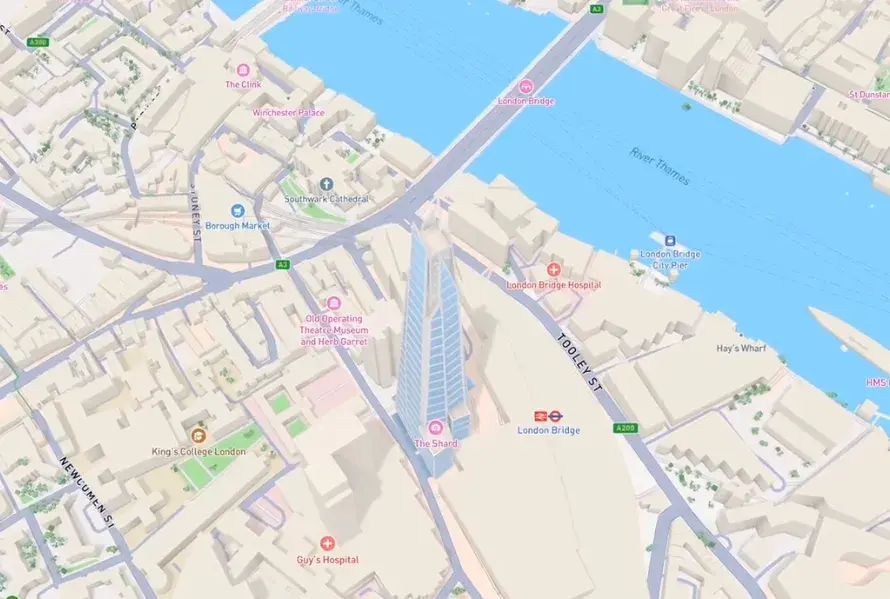
Mapbox is an AI-powered location platform with 3D-rendered maps and live route navigation.
The free API is purpose-built for automakers, mobile app developers, and logistics services. That means you can integrate the software into your automobiles and mobile apps for location-based services.
I like Mapbox because it offers three key features:
- Maps: Improve location awareness with 3D maps and create unified maps for mobile and web usage. Their animation and interactivity features make these maps a better Google Maps alternative.
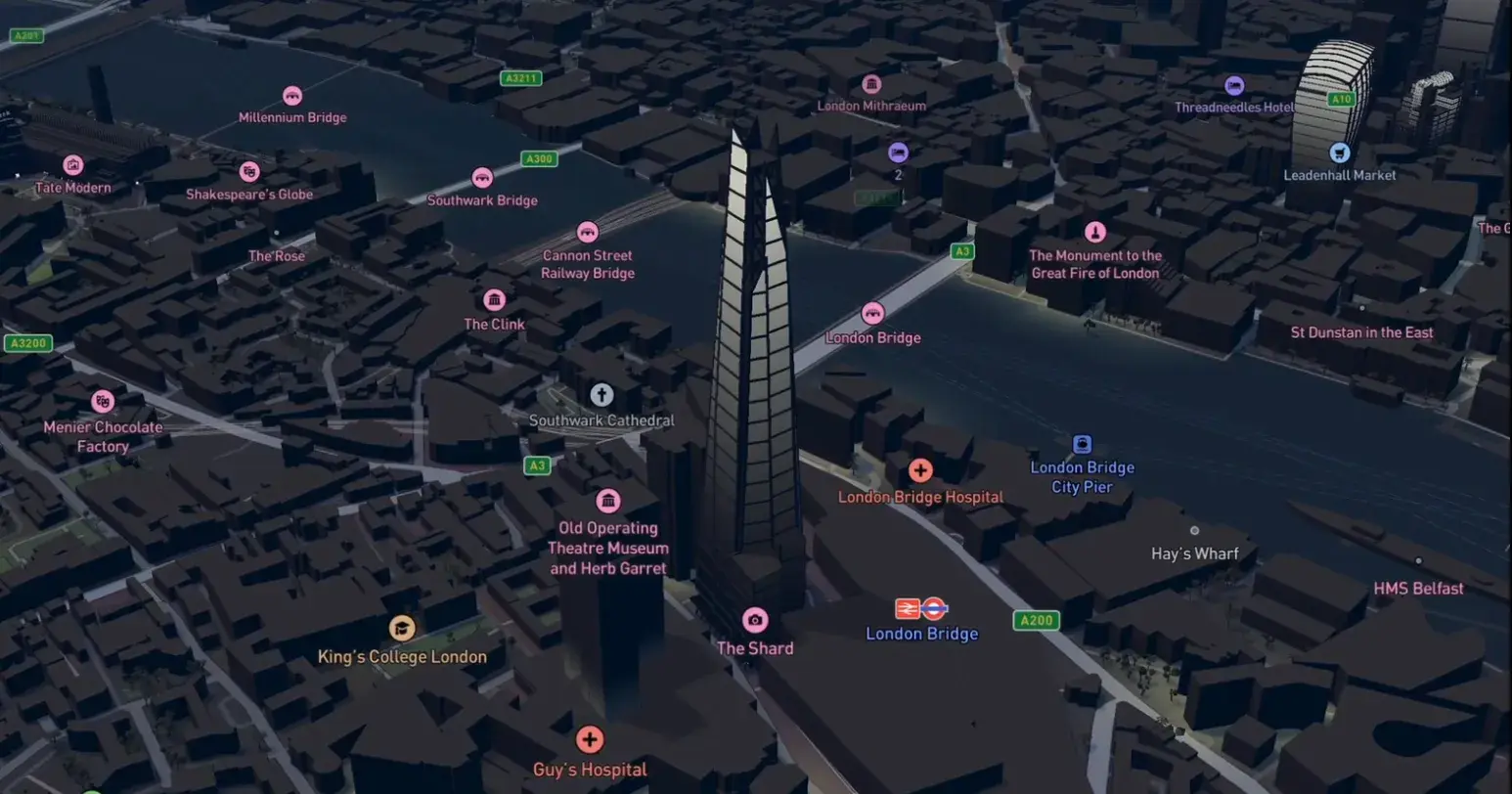
- Search. Mapbox collects location data from 160 sources in 39 languages to display the most accurate location at all times. The app offers over 70% rooftop accuracy in metro areas worldwide.
- Navigation. You can build custom navigation experiences with live AI-powered data. Mapbox APIs process over 29 million daily requests for directions, travel time estimates, and more.
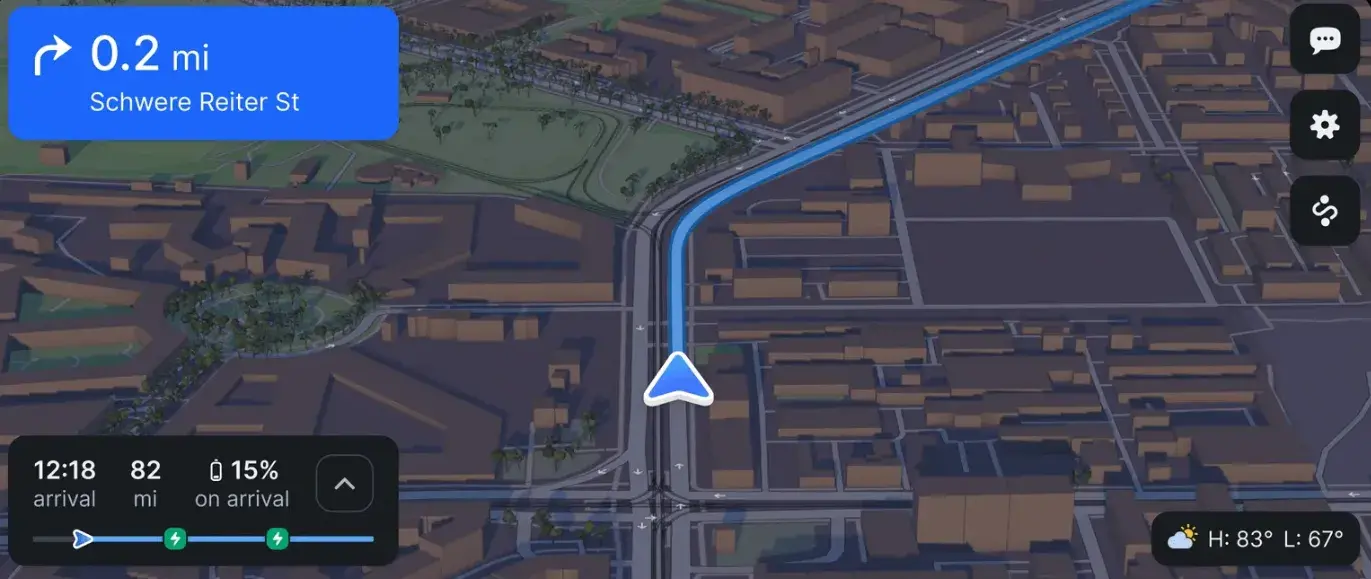
Mapbox’s advanced data analysis features also allow you to track user activity and optimize your UX accordingly.
Pros:
- Highly customizable.
- Seamless rendering of 3D maps.
- Offers free hosting and geocoding services.
Cons:
- Free version has limited features.
2. Apple Maps
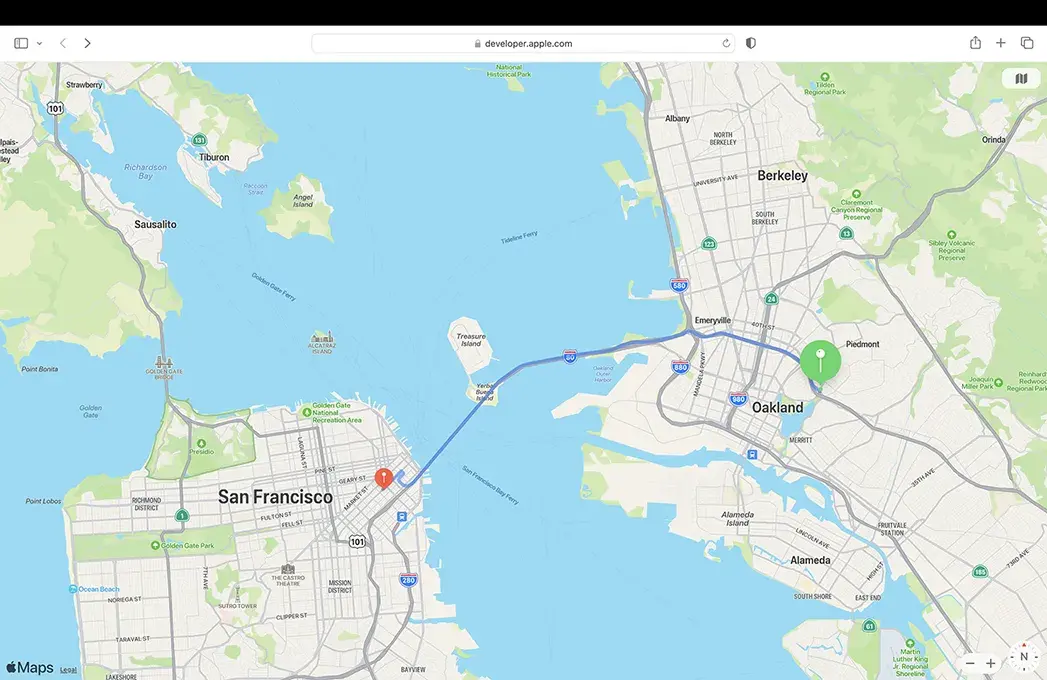
Apple's free map software is an excellent alternative to Google Maps for iOS users. It offers turn-by-turn navigation, public transit directions, and 3D flyover views of maps in select areas.
MapKit, its Google Maps API alternative, lets you access Apple Maps on any device. I could use this tool to create overlays and annotations to mark any points of interest. The API also completes your text while searching to simplify the location search experience.
Another notable feature is the Place Card API. This lets you highlight important places for your users and give them quick access.

I also used Snapshots to create real-life views of different locations. You can take pictures using your camera and design snapshots for any location.
Pros:
- Add maps to your website with Embed API.
- Includes traffic data updates on an hourly basis.
- Highlight paths or geographic features with overlays.
Cons:
- The free version doesn't support custom styles or points of interest (POIs).
3. Azure Maps
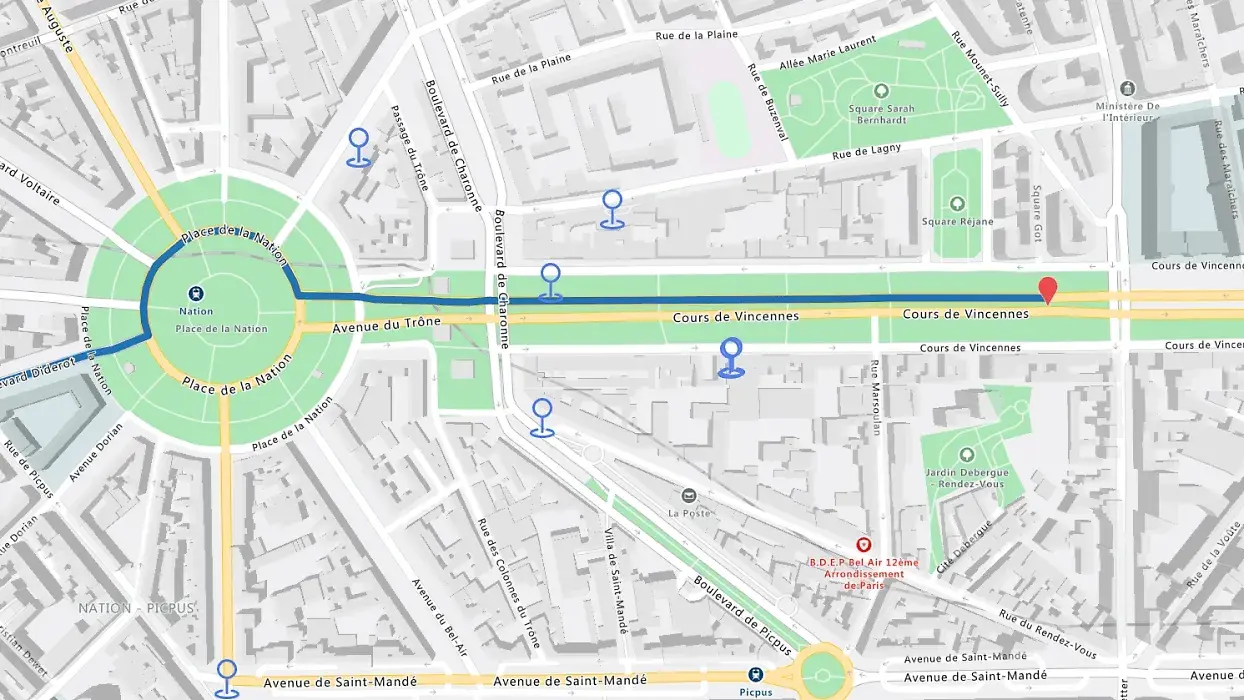
Azure Maps is another free Google Maps API alternative for developers. It helps you design map-based or location-enabled experiences.
This free API from Microsoft provides detailed aerial imagery with precise street-level detail, making it ideal for map applications like route optimization, asset tracking, and real estate sites. It also offers free geocoding and routing services.
I used this tool to create and share maps with in-depth road coverage. Maps also show key points of interest, building footprints, and routing directions for cars, trucks, bicycles, and pedestrians.
Apart from road coverage, Azura Maps show traffic, weather, and image-based maps.

Pros:
- Offers hosting, geocoding, and route optimization.
- Roll out custom indoor maps for any use case.
- Access location intelligence features like geofencing, closest point, etc.
Cons:
- Need an Azure subscription and API key to use it.
4. HERE Maps
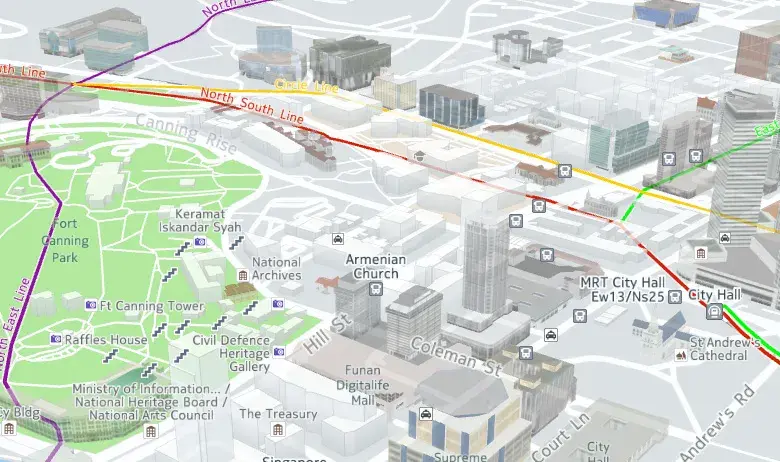
HERE's free map API provides highly accurate global maps covering over 200 countries. I found detailed coverage of roads, points of interest (POI), public transport stops, and more.
Here are some standout features that make HERE Maps a solid alternative for Google Maps API:
- Geocoding and search. Convert any address or location into geographical coordinates and vice versa to search for specific locations seamlessly.
- Optimized routes. Calculate the time required and find the best routes to reach a location using different modes of transportation, such as car, bike, and others.
- Map tile rendering. Customize your maps’ design with high-quality map tiles to improve the user experience.
Here are a couple of examples of map tiles I explored:
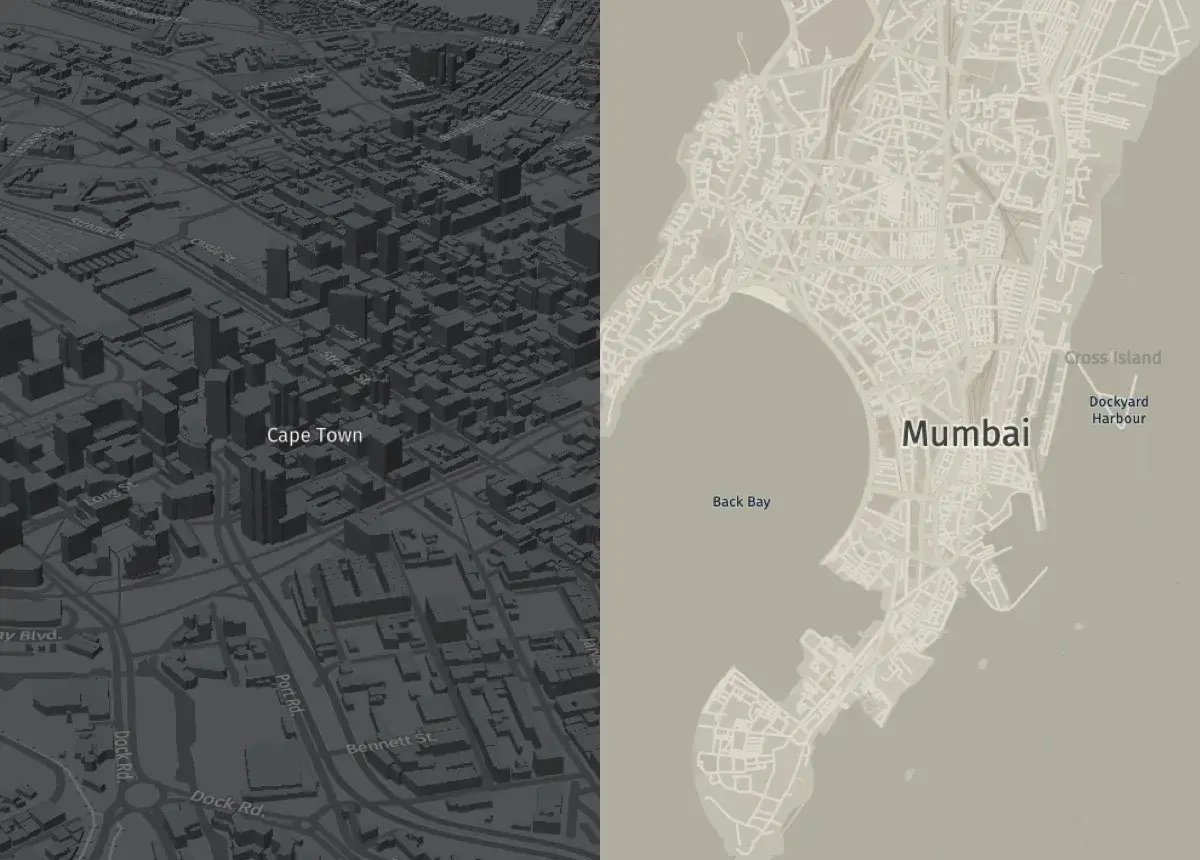
From my analysis, what sets HERE apart is its emphasis on privacy and data ownership. The company transparently states how it handles data. So, you can rest assured that your (or your users’) data is securely managed.
With HERE’s free starter plan, you can make up to 250 daily requests without needing a credit card or contract.
Pros:
- User-friendly interface and no registration in the free version.
- Send up to 250 requests per day without a credit card.
- Offers free geocoding and hosting services.
Cons:
- Free mapping data isn’t as detailed as other software.
5. OpenStreetMap
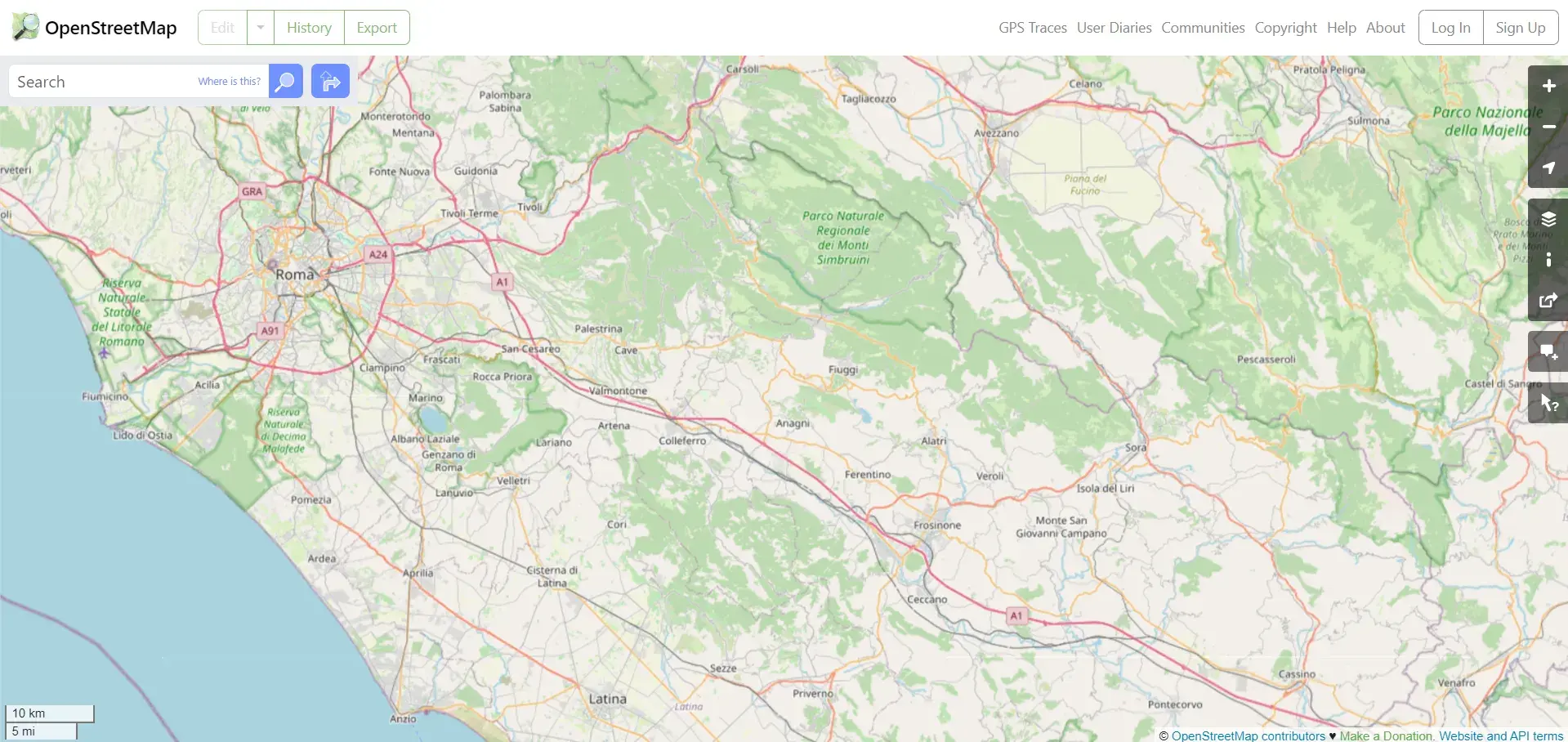
OpenStreetMap is a collaborative project built with crowdsourced data.
The platform collects data from a global community of volunteer cartographers. These contributors use GPS devices and aerial imagery to maintain the maps available on the platform.
One of the best open-source alternatives to Google Maps API, OpenStreetMap lets you freely modify and distribute map data. You can also create your map styles, overlays, and other elements with greater flexibility.
Despite being an open-source project, OpenStreetMap offers all the features of a paid mapping service, including geocoding, routing, and offline mapping.
Pros:
- Works without an API key and usage limits.
- High level of customization and frequent updates.
- Provides detailed street map information in dozens of languages.
Cons:
- The database lacks certain POI types, such as hospitals and police stations.
6. MapQuest
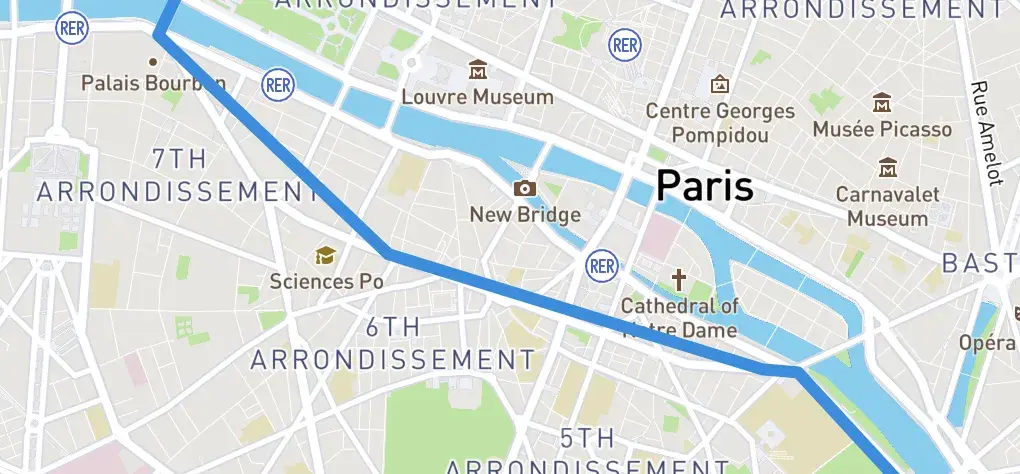
MapQuest offers a suite of APIs to create map-based experiences. It’s one of the most versatile alternatives to Google Maps API because of its range of features. Here are a few features I explored:
- Mapping and geocoding. MapQuest lets you embed customized maps on your site or app. You can change the map’s styling to match your branding. The geocoding API also converts your addresses into coordinates and vice versa.
- Routing and directions. The app gives you turn-by-turn directions between locations for different modes of transportation. The Route Matrix API also provides travel times to help you determine the most efficient route.
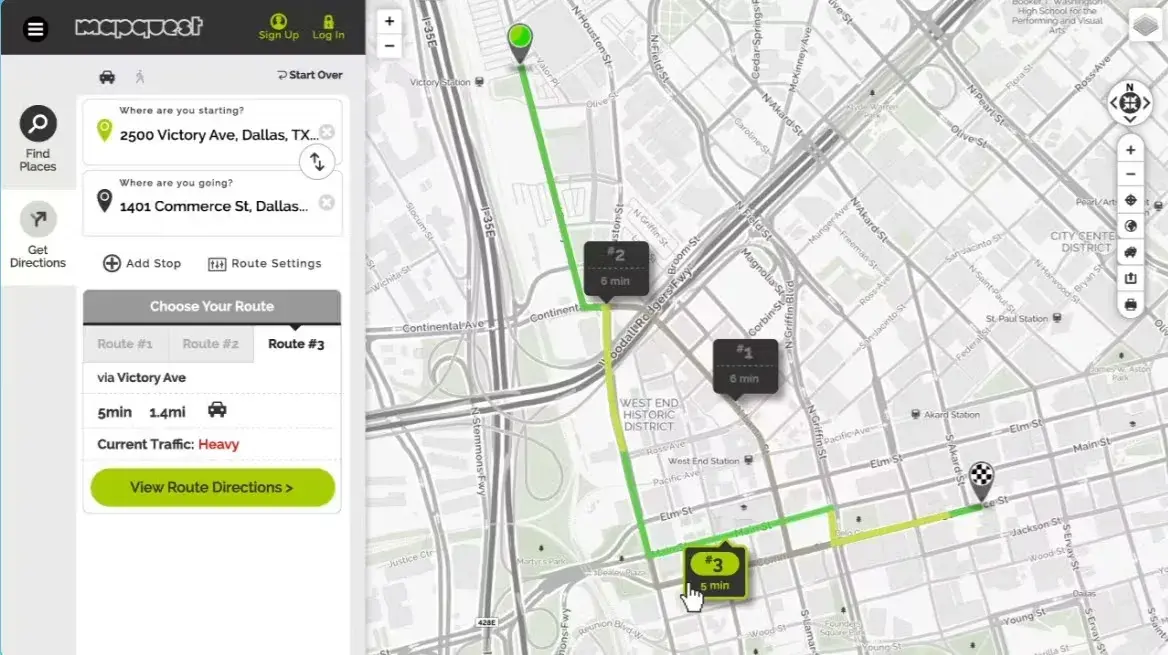
- Search services. Locate any points of interest with the search API and find specific locations effortlessly. You can also access real-time traffic information to optimize your routes.
You can find detailed maps of the USA, Canada, and Puerto Rico with MapQuest. It’s a more cost-effective solution with essential features like geocoding, routing, and search.
Pros:
- Allows bulk processing of geocoding requests.
- Versatile customization options in maps and routing.
- Get detailed documentation, code samples, and tutorials.
Cons:
- The free version supports only basic features, like street maps.
7. TomTom
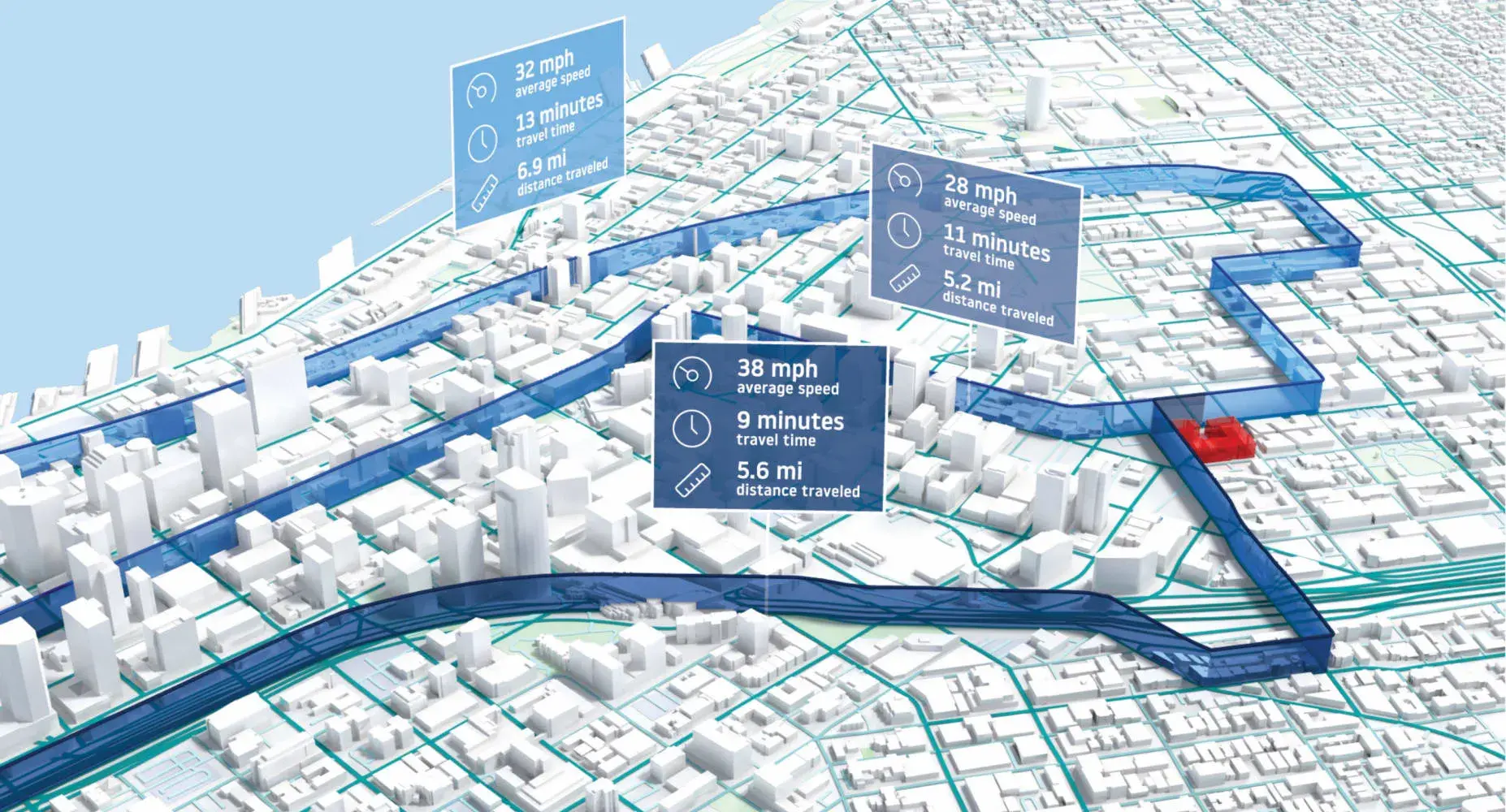
TomTom's free API offers detailed maps of over 200 countries and free hosting services for your app. You can design customized maps with additional details like real-time traffic, map tiling, and vector rendering.
Like most other Google Maps alternatives, this map API software offers robust search and routing capabilities. This makes it easy to find any location, identify its coordinates, and choose the most efficient route between multiple locations.
Its geofencing capability makes it easy to create and manage geofences. You can trigger events when users enter or exit a specific region using these geofences.
Pros:
- Dedicated APIs for EV search, geocoding, logistics, and more.
- Access real-time traffic information with congestion and incident reports.
- Integrate maps into any site or app with custom animation styles.
Cons:
- Lacks advanced capabilities available in other tools.
8. OpenLayers
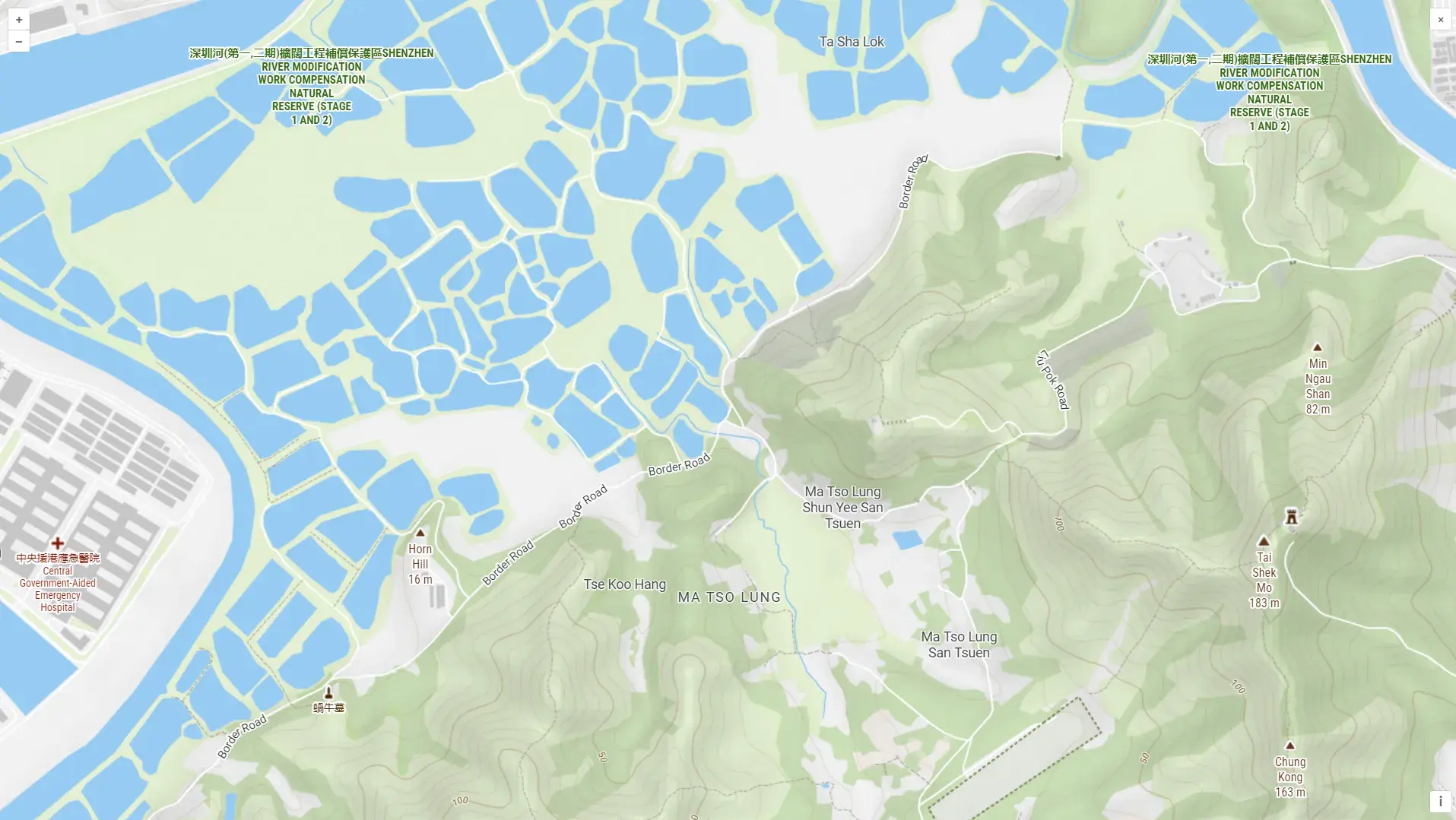
OpenLayers is a free API with a JavaScript library for creating interactive maps and data visualizations. It supports popular formats like GeoJSON, WMS, KML, GML, and more to create multiple vector layers in your maps.
This open-source platform displays map tiles, vector data, and markers. You can easily customize maps using CSS or third-party libraries for advanced customization.
While OpenLayers isn’t as advanced as other solutions, it is a good option for smaller projects.
Pros:
- Free and open source with no API key needed.
- Highly customizable with a lightweight user interface.
Cons:
- Not as easy to use as some of the other free mapping APIs.
9. Esri ArcGIS
ArcGIS Platform by Esri offers detailed worldwide maps, geocoding services, address validation services, and more.
You can find a wide variety of basecamps such as streets, topography, and satellite imagery, among other things. The platform also lets you create additional layers of data, like traffic, weather, etc.
What sets ArcGIS apart is that it supports sophisticated data visualization techniques. You can create interactive maps and dashboards to intuitively display complex datasets for different locations. Here’s an example of one such interactive map visualizing a dataset:
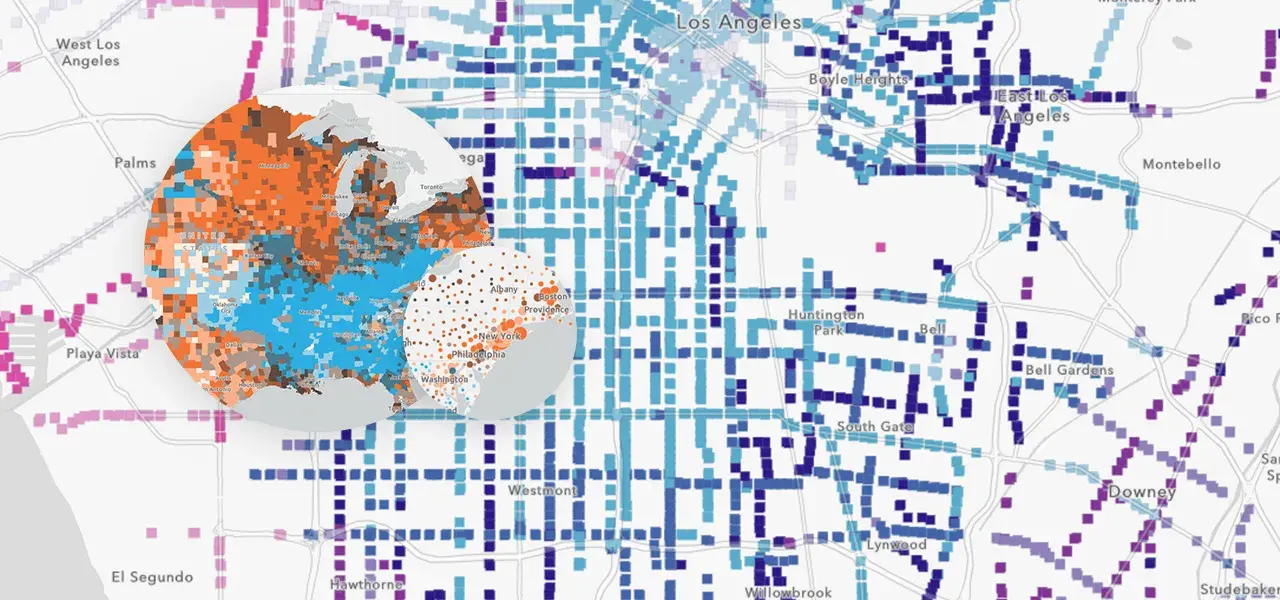
The platform also includes tools for performing spatial analysis with geographic data. These tools include heatmaps, proximity searches, demographic analysis, and more.
Pros:
- Offline data management and convenient editing.
- Advanced cartographic tools to better understand location data.
- Offers an end-to-end system for collecting and managing imagery.
Cons:
- Not entirely free; available in a pay-as-you-go model.
10. GraphHopper

GraphHopper's free API provides detailed maps of the world and free geocoding, routing, and route optimization services. Besides all the essential features like routing, geocoding, and search, GraphHopper offers some unique capabilities.
Here are a few of its key features:
- Map Matching API. It converts your GPS-enabled routes into actual roads to give you a real-time view of the route.
- Isochrone API. It calculates all accessible areas for different vehicle profiles so that you can avoid taking a specific route while traveling.
- Matrix API. It calculates the distance and time matrices between multiple locations to understand the speed required for any road network.
One of GraphHopper's big advantages is that it doesn’t require complicated coding and algorithms. The API is a RESTful web service, so you can easily embed it into your site or app.
Pros:
- Offers optimized and time-dependent routes for multiple locations.
- Access advanced routing tools like map matching, cluster calculation, etc.
- Simplify navigation with turn-by-turn directions on this open-source tool.
Cons:
- Doesn’t offer a map tile display.
Which Free API Map Alternative Should You Use?
With so many free Google Map API alternatives available, you now have plenty of options for creating powerful map applications.
While there isn't a one-size-fits-all answer, these free APIs offer something for everyone. Whether you need street-level detail, free hosting, or interactive maps and data visualizations, I recommend trying one of these free APIs.
Editor's note: This post was originally published in January 2023 and has been updated for comprehensiveness.


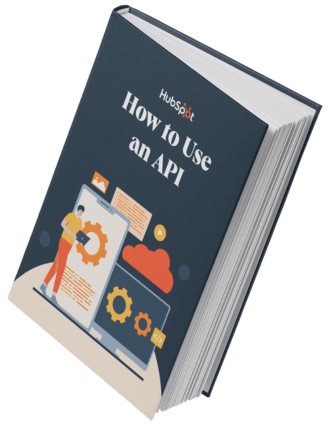

![How to get a YouTube API key [tutorial + examples]](https://53.fs1.hubspotusercontent-na1.net/hubfs/53/%5BUse%20(1)-4.webp)







